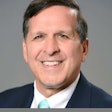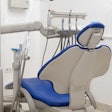
In the past, if a patient was unhappy with their experience in a dental practice, they either phoned the office or the dentist to complain, left the practice without saying a word, or, worse yet, complained to the state dental board. Now in the digital world, the patient can complain without a confrontation or without providing formal documentation. It is painless for the patient, but it can be damaging and embarrassing for the practice.
 Dr. James V. Anderson.
Dr. James V. Anderson.Yelp, Twitter, Facebook, and other social media platforms offer a forum to exchange information honestly and are often unreasonably dramatized. Most people with access to the internet look at online reviews before purchasing a product, booking a hotel or restaurant, and visiting a healthcare provider.
It is prudent, especially post-pandemic, for you and your team to assess your customer service and proactively address areas where you have noticed a potential issue or a patient has voiced a concern.
A proactive approach is to create a system that prevents complaints and allows patients to resolve their concerns without a public rant. If this avenue fails, Plan B includes responding to a negative online review.
Below are suggestions you can take to your team for discussion and implementation.
Customer service
- On the phone: A frequent complaint on social media about a dental practice is that someone was rude during a phone call, which is why it's essential to build strong phone customer service skills. Train the team to speak to patients on the phone as if they were standing before them. The courtesy of undivided attention and undistracted listening is not asking for much.
- In the community: Build a positive reputation in the community by becoming involved as a team in community events or sponsoring events that improve the quality of life of those you serve.
- Online: Develop an online presence via your Facebook page or another social media channel that demonstrates your commitment to dental health and wellness. Show that you are accessible and willing to listen and learn.
- After a visit: Contact your patient after their dental visit when anesthesia is necessary and the patient complains of sensitivity or soreness. A qualified team member may also call. Patients appreciate a post-visit wellness check.
- After-hours: Always inform patients how they can reach you after-hours -- by phone or via email -- for any questions or concerns they have. When a person is upset about something, the first thing they do is try to talk to someone. Be accessible.
Complaints and concerns
- Financial billing issues: Most complaints about dental practices concern financial billing issues and insurance followed by appropriateness and quality of care. Make sure you have informed the patient about their total costs and received a signed informed consent for treatment. In writing, a treatment plan and cost estimate are the best remedy to prevent a misunderstanding, but that is not always the case. Keep the patient informed when there is a denial or a delay in insurance payments, and make sure they know that you are working to solve the problem.
- Unable to contact you: Let patients know how they can contact you to resolve complaints, such as sharing your office email address or including a contact us section on your website, for example. Monitor your inbox daily and respond immediately. Under the contact us section of your website, include a web form for people to submit their comments and questions.
- Becoming defensive: Address all concerns in a listening and information-gathering manner. Do not become defensive, dismissive, or blame the patient. Offer to make it right if possible and when. Show that you care and will do what you can to resolve the issue.
- The team isn't involved: Meet with the team to analyze the circumstances that led to the negative review and make corrections to ensure it doesn't happen again. The conversation about how your practice can generate positive reviews begins with the entire team and their participation in routine patient care. Be proactive in how you address patient concerns, and don't wait for a negative online review to act.
Dr. James Anderson is a practicing dentist in Syracuse, UT, and is the CEO and founder of eAssist Dental Solutions. He can be reached via email.
The comments and observations expressed herein do not necessarily reflect the opinions of DrBicuspid.com, nor should they be construed as an endorsement or admonishment of any particular idea, vendor, or organization.



















